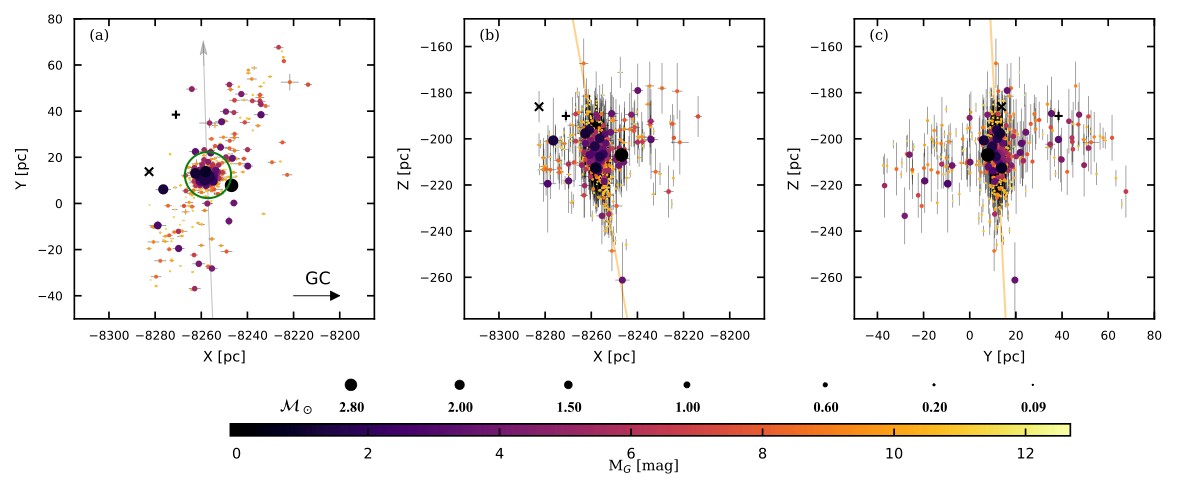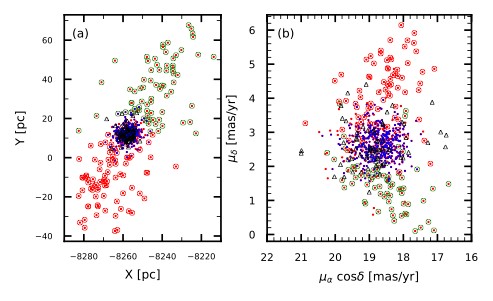Open clusters are an important part of the Galaxy and are one of the important mediums for studying the structure and evolution of the Galaxy. The structure of open cluster reflects the stellar distribution within the cluster, which changes as the sparse cluster evolves, so open clusters are often considered as an important laboratory for studying stellar dynamics. A tidal tail structure is produced due to the dynamics of the open cluster itself and the environment in which it is located. The study of this phenomenon is one of the effective ways in which we can study open clusters.
Using the GAIA DR2 data, researcher Yu Zhang (XAO) and Professor Wen-Ping Chen of the Central University of Taiwan, jointly investigated the nature and structure of the nearby open cluster Blanco 1. A tidal tail was found for the first time in this cluster. The work was supported by a cross-strait collaborative research project which jointly funded by the National Natural Science Foundation of China and the Li Guoding Science and Technology Development Foundation of Taiwan.
Member stars play an important role in the study of the morphological structure of open clusters, especially in the outer region. The member stars have a strong dependence on the observational data and the determination method. We present the stellar population, using Gaia DR2 5D parameters (parallax, kinematics, and photometry) and the unsupervised machine learning method Stargo, of the young nearby open cluster, Blanco 1. A leading tail and a trailing tail, each of 50–60 pc in the Galactic plane, are found for the first time for this cluster. Statistics of the member stars show that 2/3 of the members are in the core region. No significant mass segregation is found in this cluster. All this indicates that Blanco 1 is still in the early stage of dynamical evolution.
Paper link: https://iopscience.iop.org/article/10.3847/1538-4357/ab63d4


Figure 1. (a) The Galactocentric X-Y coordinates and (b) the PM distribution of member candidates of Blanco 1.
Contact: ZHANG Yu
Xinjiang Astronomical Observatory, Chinese Academy of Sciences
Email: zhy@xao.ac.cn